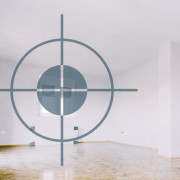Copper Chrome Arsenate: Why Treat Your Timber With It?
Copper Chrome Arsenate has been used throughout the world since 1933, and is a substance that is well known for its ability to protect wood from insect and fungal infestations. Due to the toxic compounds that are used in this treatment, it is the best thing on the market for ensuring that timber remains as strong as it can be – able to stand the tests of pests, weather and time.
Stop Insects in Their Tracks
While steel foundations are being used more frequently during recent years, the majority of houses are still built using timber foundation materials for frames, walls, beams and stumps. Lucky for us, Australia has excellent hardwood timber available to use for building houses. This is a strong, durable material, which will last for many years, but if not treated adequately, timber can fall prey to insects that can dramatically affect its strength over time. Wood boring insects such as termites and their cousins can cause a lot of damage, which can reduce the strength of wood and cause expensive damage to your foundations.
Prevent Fungal Infections
While timber is an extremely strong material, if exposed to moisture regularly, over time it can take on fungal infections that will break down its strength and cause it to rot. Often this cannot be seen until it is too late, and the rot has set in, which will mean the timber needs to be replaced a lot sooner than it should be if it had been treated with a good chemical treatment such as CCA.
Prolong the Life of Your Timber
The only thing worse than building a house with untreated timber and worrying about the risk of having wood boring pests and moisture driven fungus move in, is if you actually did build it with untreated timber, and they did move in! It would mean you paying for costly repairs to either remove or repair the problem areas, and most likely replace a lot of the untreated timber with timber that is treated. Not only does CCA protect against these nasty visitors, but it also helps to prolong the life of the timber against weathering that may occur if it is in exposed areas of your home.
Possible Risks
Because CCA contains Arsenic, it does have risks involved in its use. As arsenic fumes can be ingested or inhaled, people must use caution when either working with the wood, or using it for children’s play equipment. Burning CCA treated timber is also ill-advised due to the risk of inhaling fumes as the wood burns. For more information about CCA treated timber and why it is the right choice for your house, talk to one of our experts at Black and White Houseraising and Restumping.


